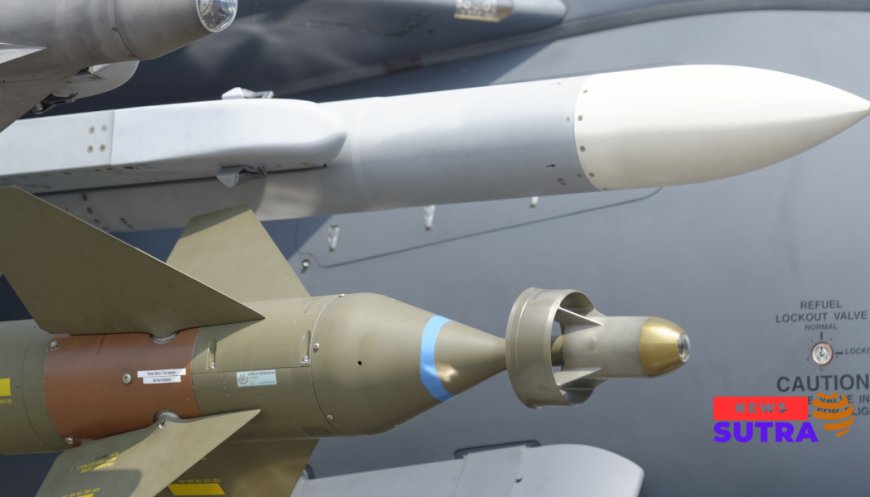Missiles or Missteps? DRDO’s New Arsenal Sparks Debate Over Cost, Capability and Strategy
India's DRDO has unveiled a series of advanced missile systems promising to bolster national defense. But as development costs soar, questions arise: Are these systems strategic game changers—or an unsustainable budget load?

India’s premier defense research agency, the Defence Research and Development Organisation (DRDO), is once again at the center of national security conversations. In early 2025, the DRDO announced a new generation of missile systems, including the much-anticipated Pralay, Rudram-II, and the next-gen Agni-V with Multiple Independently targetable Reentry Vehicle (MIRV) capabilities.
These systems, billed as crucial to India’s evolving military doctrine, are designed to counter threats from both Pakistan and China. However, defense analysts and budget watchdogs are sounding the alarm over the escalating development costs and logistical sustainability of such high-end systems.
So, are DRDO’s innovations a decisive edge for India—or is the country building an arsenal it may struggle to afford and operate?
The New Arsenal: What DRDO Has Developed
DRDO’s missile development programs have seen rapid strides over the last three years. Here’s a closer look at what’s making headlines:
1. Pralay Tactical Ballistic Missile
-
Range: 150–500 km
-
Purpose: Short-range, quick-reaction tactical strikes
-
Status: Inducted by Indian Army in limited numbers
-
Key Feature: High maneuverability to evade interception
More about Pralay on PIB India
2. Rudram-II Anti-Radiation Missile
-
Range: ~300 km
-
Use Case: Neutralizing enemy radar and surveillance systems
-
Platform: Su-30 MKI jets
-
Current Phase: Advanced trials underway
Detailed project insights: https://drdo.gov.in
3. Agni-V MIRV Variant
-
Capabilities: Multiple nuclear warheads targeting different locations
-
Significance: Enhances India's second-strike capability
-
Status: Under final testing; part of Strategic Forces Command roadmap
Analytical take from The Print
Game Changer for Strategic Autonomy?
India faces a challenging security environment with dual-front tensions. China's growing missile inventory and Pakistan’s tactical nuclear capabilities have forced India to diversify and modernize its own deterrence.
According to Lt. Gen. Rakesh Sharma (Retd.), former DGMO, “The Pralay and Agni MIRV systems provide flexible and survivable responses, which is critical in any full-spectrum deterrence doctrine.”
The new systems are also expected to reduce reliance on imported missile tech and align with Atmanirbhar Bharat in defense, a campaign actively promoted by the Ministry of Defence.
Further reading: Make in India Defense Sector
The Budget Backlash: Numbers That Don’t Lie
While the DRDO’s technological progress is undeniable, the costs are mounting. As per recent data from the Union Budget 2025-26, the capital outlay for defense R&D has jumped 17% over the last year, largely attributed to advanced missile programs.
-
Estimated cost of Pralay deployment: ₹7,000 crore over 5 years
-
Rudram-II program costs have tripled since 2021
-
Agni-V MIRV integration cost projected at ₹15,000 crore
Critics argue that defense procurement lacks transparency, with repeated delays and overlapping projects draining fiscal resources. The Comptroller and Auditor General (CAG) in its 2024 report cited “inefficient project oversight and poor cost control” in at least three missile programs under DRDO.
Operational Viability: The Logistics Conundrum
Beyond development, operational readiness and deployment logistics remain key concerns. According to a defense logistics review in IDSA’s Journal, India's missile inventory often suffers from:
-
Lack of storage infrastructure
-
Delayed integration with command systems
-
Insufficient crew training and simulator availability
This raises the question: Can DRDO build at the pace the armed forces can deploy and manage?
Global Comparisons: Are We Keeping Up?
When measured against global missile powers like China, the U.S., or Russia, India’s capabilities are still evolving rather than mature. While Pralay may rival Chinese DF-12 and the Rudram family is modeled on the U.S. HARM system, India's indigenous systems:
-
Take longer to reach full operational status
-
Require more public-private collaboration
-
Often lag in mass production scalability
However, experts at RAND Corporation argue that “India’s strategic missile ecosystem is fast maturing, particularly in radar-seeking and hypersonic tech research.”
DRDO’s Response: “Cost is Temporary, Capability is Permanent”
Senior DRDO officials have defended their programs, citing long-term strategic value. Speaking at the Aero India 2025, DRDO Chairman Dr. Samir V. Kamat said:
“You cannot deter a future war with today’s weapons. Investment now prevents greater losses later.”
The agency has also partnered with L&T, Bharat Dynamics Ltd., and private startups to reduce production costs and improve turnaround times.
Insight into these partnerships can be found at https://bdl-india.in.
Public Sentiment: Supportive but Skeptical
Surveys conducted by Lokniti-CSDS show that while over 72% of respondents support indigenous missile development, nearly 48% worry about disproportionate defense spending amid rising inflation and unemployment.
This points to a nuanced public mood—patriotic but fiscally cautious.
Conclusion: At a Crossroads Between Security and Sustainability
India’s missile modernization is not just about weapons—it’s about strategic posture, technological sovereignty, and future conflict preparedness. DRDO’s new systems may shape the future of India’s deterrence doctrine, but the road ahead must be paved with greater budgetary discipline, operational synergy, and transparent oversight.
Whether these systems will prove to be true game changers or long-term burdens depends on how well India balances ambition with accountability.



















































